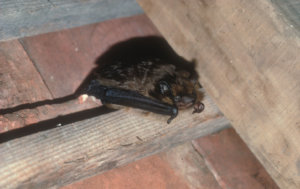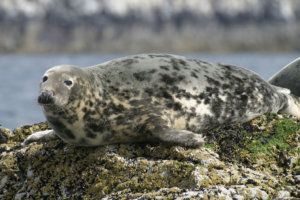 Introducing five species that are struggling on the mainland but doing very well in splendid isolation on the Isle of Wight.
Introducing five species that are struggling on the mainland but doing very well in splendid isolation on the Isle of Wight.
1. Common dormouse
The common dormouse is an internationally rare mammal species, yet it can be found in 70{a9dddf1bd2af35332cd5613cac8e63e148b38f23ebed35c9943c32a7f65a9815} of the Island’s woods, as well as in scrub on heathland, reedbeds and bramble scrub. Populations of dormice occur at Eaglehead and Bloodstone Copses, Swanpond Copse and St Lawrence Undercliff – all Wildlife Trust reserves.
The dormouse’s success on the Island is down to the climate and good coppice management, which combine to supply it with a wide variety of species to feed on throughout the year and a good supply of hazelnuts to fatten up for the winter.
The Trust has played its part by carrying out a comprehensive survey of Island woodland for dormice and has also helped the Isle of Wight Natural History and Archaeological Society to undertake dormouse nest box monitoring.
2. Red squirrels
Found in over 90{a9dddf1bd2af35332cd5613cac8e63e148b38f23ebed35c9943c32a7f65a9815} of the Island’s woodland, the red squirrel is thriving thanks to sympathetic woodland management and the absence of the non-native grey squirrel. Grey squirrels are a problem for reds in the broadleaved woodlands of the mainland. They can digest acorns (which reds can’t) and are better at surviving tough winters and poor food availability. They also carry the parapox disease, which is fatal to reds. The reds on the Island also benefit from the lack of feral deer. Coppicing can be carried out without the need for expensive deer-protection, which means hazel can be managed to produce a far better crop, giving the squirrels a ready supply of their favourite nuts.
The Trust has been co-ordinating the Isle of Wight Red Squirrel Project. The project encourages landowners to consider sympathetic management of woodlands for red squirrels. The Trust has also helped with the planting of 100 ha (247 acres) of new native broadleaved woodland under the Forestry Commission JIGSAW tree planting scheme and undertaken two Island-wide surveys of the red squirrel populations.
 3. Bats
3. Bats
The classic combination of climate and sympathetic woodland management has also led to the Island’s woodland supporting a number of rare bat species. Noctule, Bechstein’s and Barbastelle bat populations are doing well, together with brown long-eared bats and two species of pipistrelles. In fact the Isle of Wight is now the best English county for bats in terms of the number of species found and the abundance of the rarer types. The Island’s Bat Group records roosts and reports on any potential damage. Special sites for these bats include the Briddlesford Copse woodland complex, owned and managed by the People’s Trust for Endangered Species, and the populations found in the Wildlife Trust’s St Lawrence Undercliff Wildlife Reserve.
4. Water voles
The water vole is Britain’s fastest declining mammal species yet has a strong population on the Isle of Wight. Although the Island’s river systems are not as rich as Hampshire’s famous chalkstreams, the difference is, there are no mink. This means that the water vole is able to live in less than perfect conditions without being threatened by its non-native mainland predator.
The water vole thrives in all the Island’s major river systems, including the River Medina and both the eastern and western Yar. The only threats are poor management of the rivers, which leads to the destruction of its burrows, and the lack of management of bankside scrubs and trees, which can lead to its preferred waterside habitats being left in shade. The Trust has co-ordinated two surveys of water voles with help from the Environment Agency and meets farmers to talk about the management of rivers and riverside vegetation.
 5. Marine Mammals
5. Marine Mammals
The value of the Island is by no means restricted to the land; its seas are home to an increasing diversity of marine mammals. Common and grey seals are commonly recorded, particularly on the Solent shore as they make their way south to the Atlantic. There are dolphins and whales too, although they are less likely to be seen close to the Island’s shore. Harbour porpoise, bottlenose dolphin, common dolphin and pilot whale are recorded most years in Island waters as they come through the English Channel looking for food. Larger whales such as Minke whale and fin whale have also been recorded, more frequently in recent times. The Wildlife Trust runs a marine mammals recording scheme to raise awareness of the importance of our waters for these magnificent creatures. You can download forms from our website at www.hwt.org.uk



